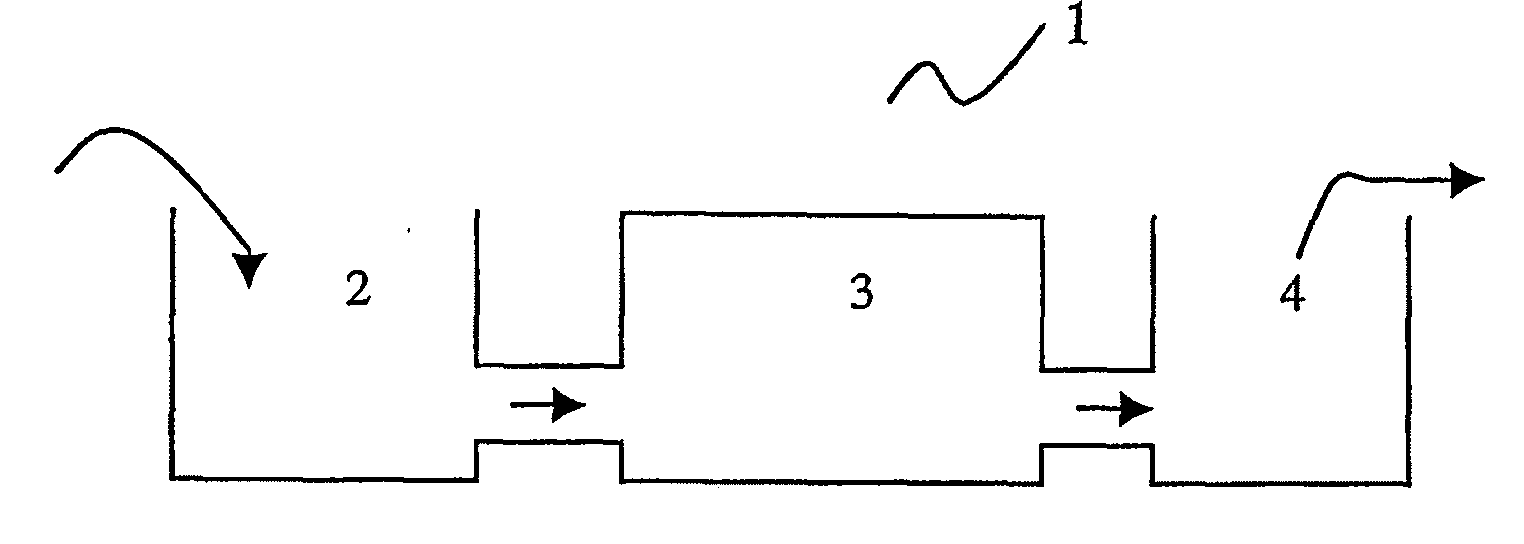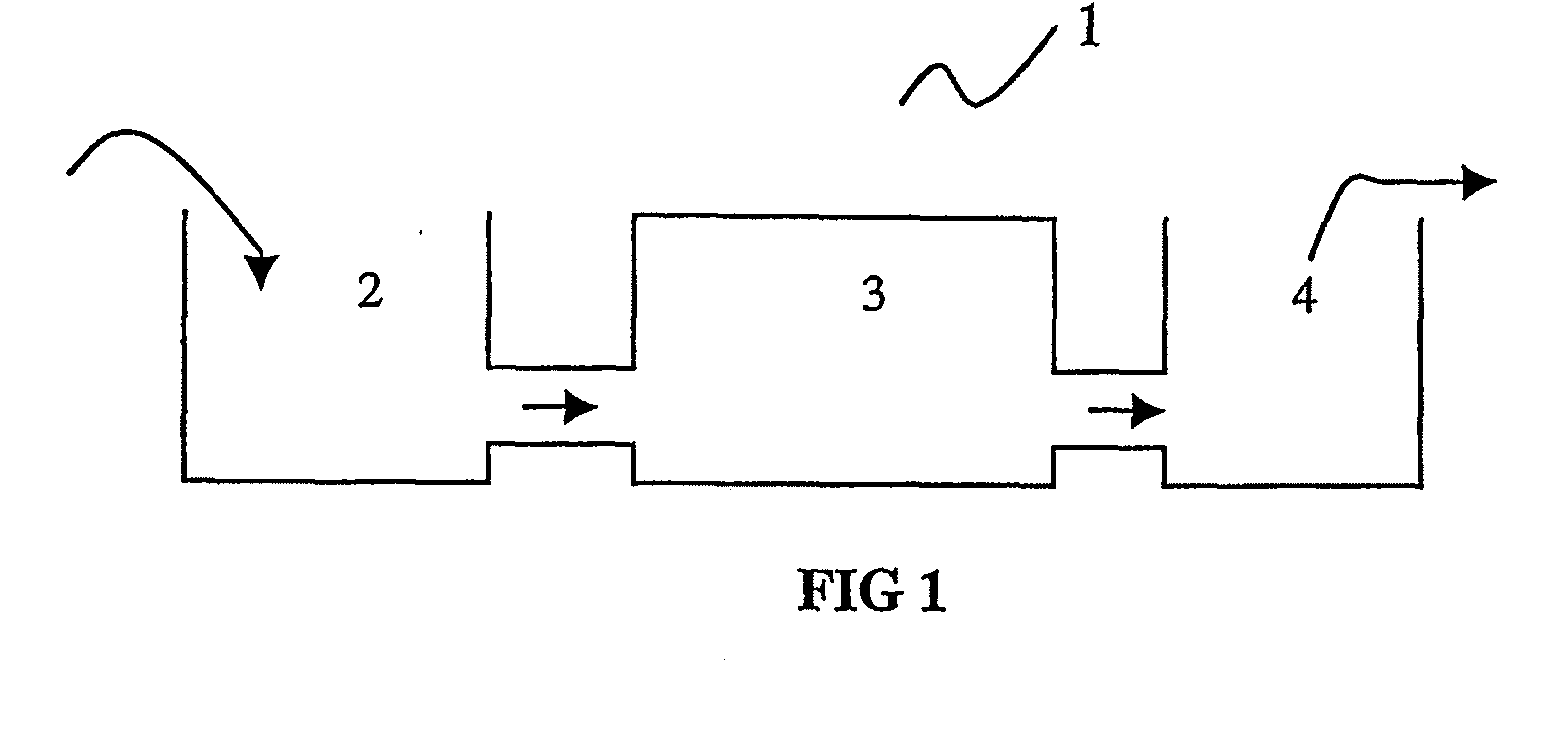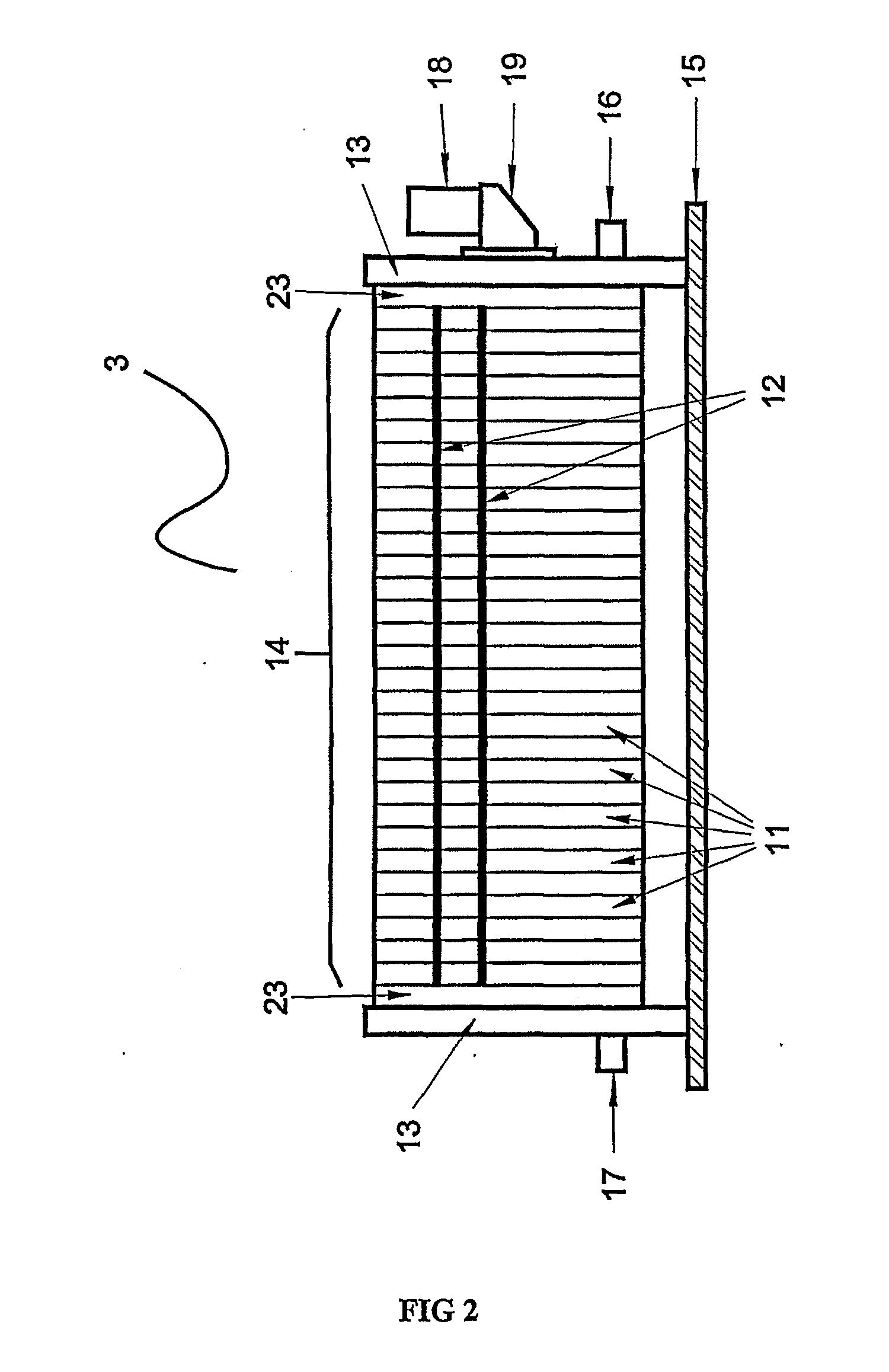Advanced Electro-Coagulation Device And Process Of Using The Same For Wastewater Treatment
a technology of electrocoagulation device and wastewater treatment, which is applied in the direction of electrostatic separation, water/sludge/sewage treatment, centrifuge, etc., can solve the problems of limited ec system wide use, affecting the operation of the system, and unable to meet the needs of water supply, etc., to achieve high efficiency, reduce metal depletion, and high efficiency electrochemical reaction
- Summary
- Abstract
- Description
- Claims
- Application Information
AI Technical Summary
Benefits of technology
Problems solved by technology
Method used
Image
Examples
Embodiment Construction
[0069]The present invention may be understood more readily by reference to the following detailed description of certain embodiments of the invention.
[0070]Throughout this application, where publications are referenced, the disclosures of these publications are hereby incorporated by reference, in their entireties, into this application in order to more fully describe the state of art to which this invention pertains.
[0071]While the description will relate to many specific elements and techniques in order to better illustrate the principles of the present invention, it is to be appreciated that the present invention is not limited to the specific descriptions. The present invention can be practiced with variations to any specific elements and techniques without departing from the principles of the present invention. At the same time, many details and specifics that their omissions will not affect the practices of the present invention will be omitted from the description in order no...
PUM
| Property | Measurement | Unit |
|---|---|---|
| distance | aaaaa | aaaaa |
| voltage | aaaaa | aaaaa |
| DC voltage | aaaaa | aaaaa |
Abstract
Description
Claims
Application Information
 Login to View More
Login to View More - R&D
- Intellectual Property
- Life Sciences
- Materials
- Tech Scout
- Unparalleled Data Quality
- Higher Quality Content
- 60% Fewer Hallucinations
Browse by: Latest US Patents, China's latest patents, Technical Efficacy Thesaurus, Application Domain, Technology Topic, Popular Technical Reports.
© 2025 PatSnap. All rights reserved.Legal|Privacy policy|Modern Slavery Act Transparency Statement|Sitemap|About US| Contact US: help@patsnap.com



